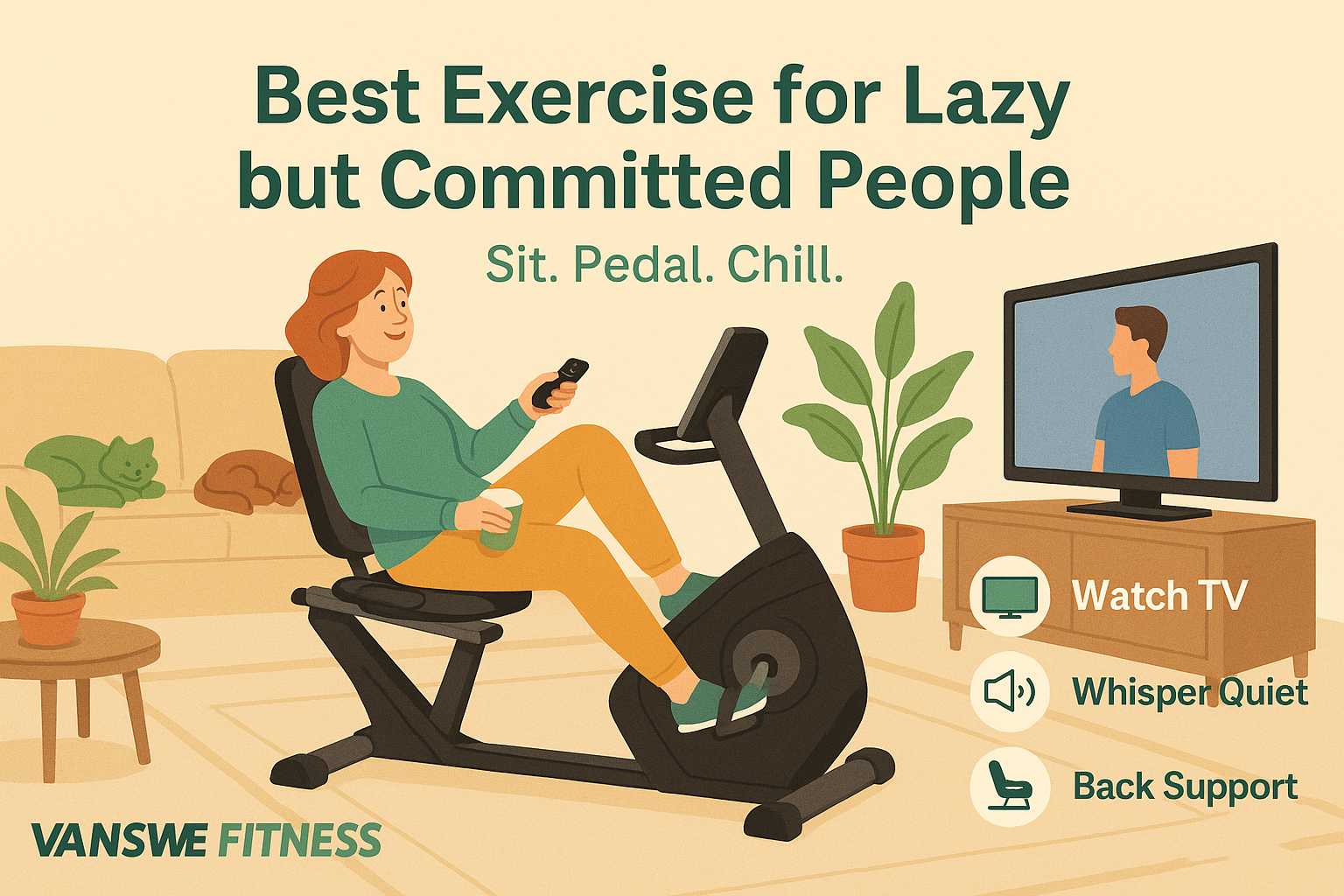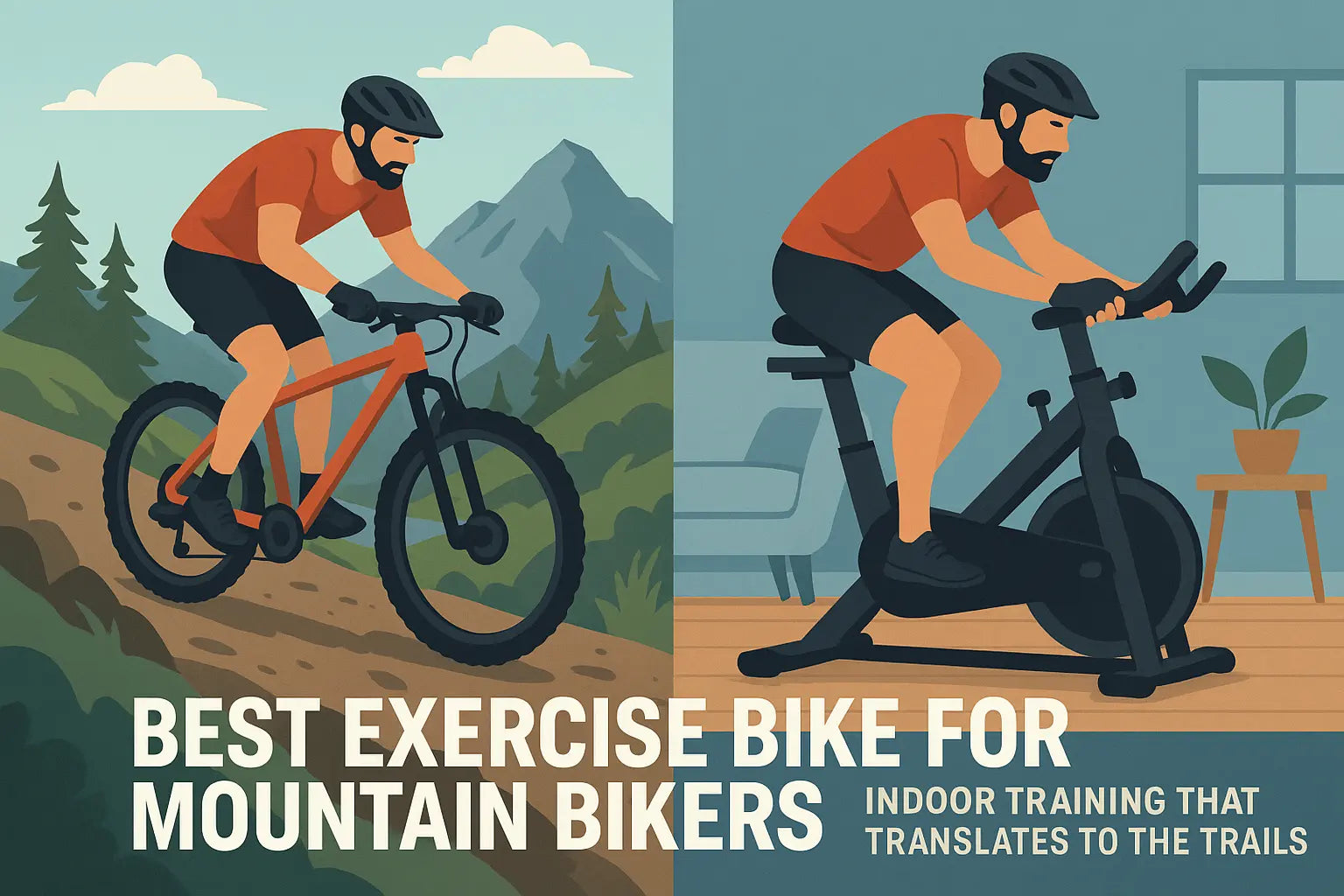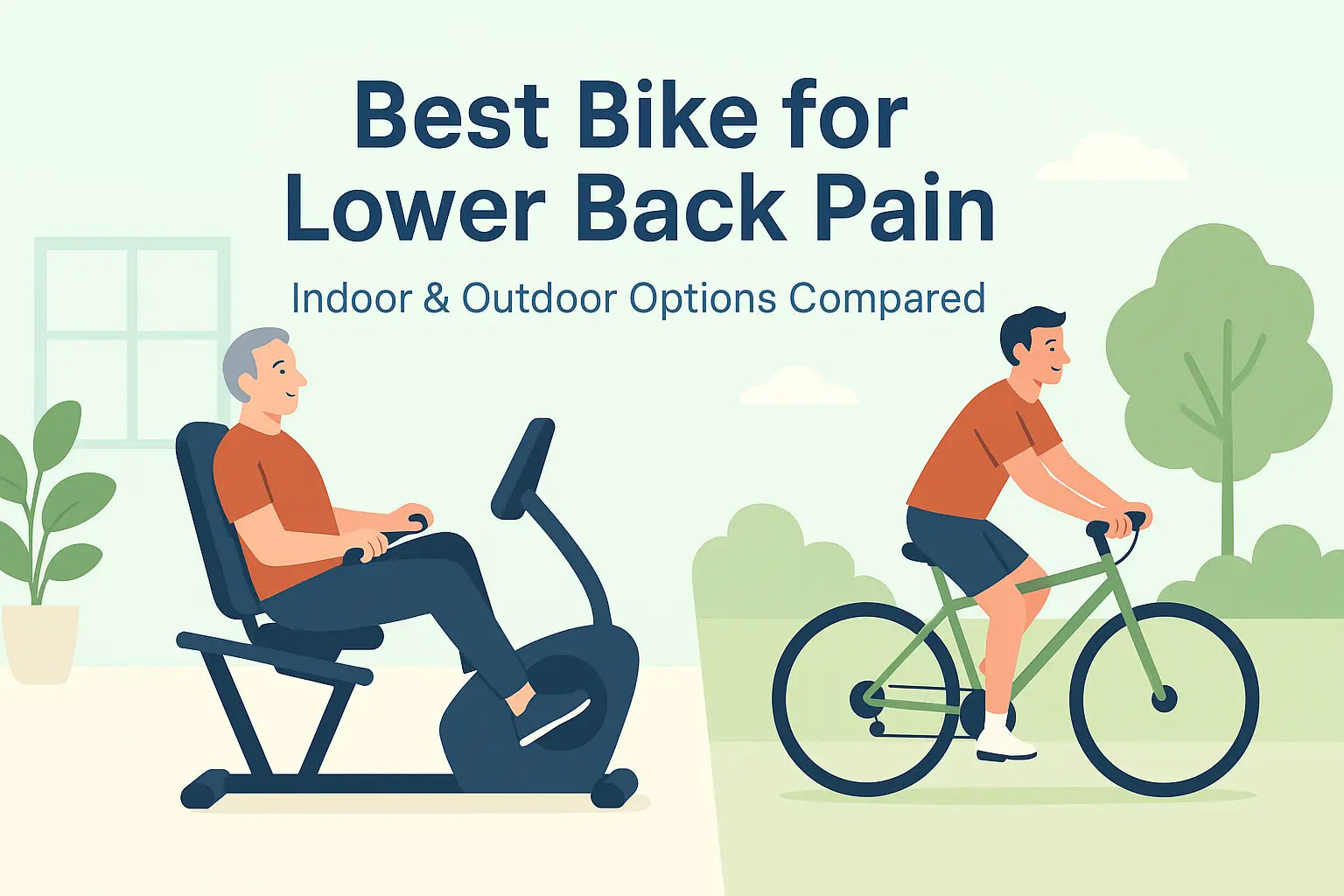A recumbent bike is one of the safest and easiest cardio machines for beginners. It is a type of stationary bike, and stationary bikes are popular for customizable, low-impact workouts. With a supportive seat, reclined position, and low-impact pedaling, it’s ideal for those new to fitness, returning after a break, or recovering from injury. This beginner-friendly guide explains why a recumbent bike is a smart starting point, how to get set up, and provides a step-by-step 4-week workout plan to help you build endurance and see results safely.
When comparing upright versus recumbent bikes, recumbent bikes are more comfortable for beginners and experienced exercisers alike, while upright bikes are more similar to outdoor cycling.
In this guide, you’ll learn why the recumbent bike is a smart choice for beginners, how to get started, what a 4-week workout plan looks like, and how to avoid common mistakes. As a type of cardio equipment, recumbent bikes offer a safer and more comfortable alternative to treadmills and other stationary bikes, making them an excellent option for users of all fitness levels.
Why Choose a Recumbent Bike?
A recumbent bike is an ideal choice for your first workout because it offers comfort, stability, and low-impact cardio that’s easy on the joints. Its reclined seat supports your back, making it especially suitable for beginners, older adults, or those with limited mobility.
-
Comfort: The large seat with back support reduces strain on the lower back and supports the lumbar spine, making it ideal for those with lower back issues.
-
Low impact: Gentle on joints, especially knees and hips, making it safer for overweight users or those with arthritis. Recumbent bikes provide targeted strengthening for the lower body while minimizing upper body fatigue.
-
Stability: The reclined design provides balance and reduces the risk of falls.
-
Simplicity: Easy to use with minimal setup or skill required.
The pedals on a recumbent bike are positioned in front of the user, which helps engage the core muscles and supports proper biomechanics during exercise.
Research published in sports phys ther and int j sports phys highlights that recumbent bike workouts are effective for rehabilitation, improving muscular output, and energy use. Recumbent bikes also offer strength training benefits for the lower body and core, providing a good workout for all fitness levels.
According to a 2012 study in The Gerontological Society of America [1] established clinically relevant fitness benchmarks to help older adults maintain physical independence—guidelines that support the use of low-impact exercises like recumbent cycling to promote functional health.
Related Article: What are the Benefits of a Recumbent Bike?
Getting Started: What You Need Before You Ride
Before riding a recumbent bike, it’s important to set up your equipment and gear properly to ensure a safe and effective workout. Adjust the seat for comfort, wear supportive shoes, and stay hydrated to avoid injury and maximize results.
-
Adjust the seat so your legs are almost fully extended with a slight bend at the knee when the pedal is at its farthest point. This helps ensure a full pedal stroke, reduces the risk of saddle soreness, and promotes proper workout form.
-
Wear proper shoes with non-slip soles.
-
Dress comfortably, preferably in moisture-wicking athletic wear.
-
Hydration and towel: Keep water and a towel nearby.
-
Optional but recommended:
-
Fitness tracker to monitor heart rate
-
Recumbent bike with magnetic resistance and digital display
Remember, the optimal setup for a recumbent bike depends on your individual goals, fitness level, and comfort preferences.
How to Setup Your Recumbent Bike
Proper setup is the foundation of a comfortable and effective recumbent bike workout. Before you start pedaling, take a few minutes to adjust your recumbent exercise bike to fit your body. Begin by positioning the seat so that when your foot is on the pedal at its farthest point, your knee has a slight bend—this helps prevent muscle fatigue and reduces strain on your joints. Make sure your back is fully supported by the seat’s backrest, allowing you to maintain a relaxed, reclined position throughout your workout.
Next, check the pedal straps to ensure your feet are secure but not too tight. Adjust the display or console so it’s easy to see your workout stats without straining your neck or shoulders. If your recumbent bike offers adjustable handlebars or lumbar support, set these to a comfortable height and angle. Taking the time to set up your recumbent bike correctly not only maximizes comfort but also helps you engage the right muscles and avoid unnecessary aches or injuries. A well-fitted bike makes every pedal stroke smoother and your workouts more enjoyable.
Safety Precautions for Beginners
Safety should always come first when starting any new exercise routine, and recumbent bike workouts are no exception. While recumbent bikes provide excellent back support and a low-impact workout, it’s important to listen to your body and avoid pushing too hard, especially in the beginning. Start each session with a gentle warm-up to prepare your muscles and gradually increase your pedaling speed and resistance as your fitness level improves.
Pay attention to your posture—keep your back against the seat and avoid leaning forward or twisting your body. If you feel any unusual pain or discomfort, stop your workout and reassess your setup or consult a certified personal trainer. Stay hydrated, take breaks as needed, and never skip your cool-down routine to help your body recover. If you have any pre-existing health conditions or concerns, check with your healthcare provider before starting a new recumbent bike exercise program. By following these safety tips, you’ll enjoy a comfortable workout and reduce your risk of injury.
Beginner-Friendly Workout Plan (Week 1–4)
 Beginners should start with 15–30 minutes of recumbent biking, 3 to 5 times per week. Gradually increase your workout duration over four weeks to build endurance. For optimal heart health and weight management, aim for at least 150 minutes of moderate-intensity cycling weekly, as recommended by the American Heart Association.
Beginners should start with 15–30 minutes of recumbent biking, 3 to 5 times per week. Gradually increase your workout duration over four weeks to build endurance. For optimal heart health and weight management, aim for at least 150 minutes of moderate-intensity cycling weekly, as recommended by the American Heart Association.|
Week |
Duration |
Resistance |
Focus |
Notes |
|---|---|---|---|---|
|
1 |
15 mins |
Low |
Getting comfortable |
Use minimal resistance, steady pace |
|
2 |
20 mins |
Low-Mid |
Intro to Intervals |
2 min slow + 30 sec fast x 5 rounds |
|
3 |
25 mins |
Mid |
Resistance endurance |
Ride at a consistent pace |
|
4 |
30 mins |
Mid-High |
Cardio and stamina building |
Alternate 3 min easy + 2 min push |
Source: Aim to ride 3–5 times per week for optimal cardiovascular benefits. The American Heart Association [2] recommends at least 150 minutes of moderate-intensity aerobic activity per week .
Related Article: Recumbent Bike for Weight Loss: Why You're Not Dropping Pounds
Warm-Up and Cool-Down Routines
Warming up prepares your body and prevents injury, while cooling down aids recovery.
Warm-Up (5 mins):
-
3 minutes of slow pedaling
-
2 minutes of dynamic stretches (e.g., leg swings, arm circles)
Cool-Down (5 mins):
-
3 minutes of easy pedaling
-
Stretching: Focus on calves, hamstrings, quads, and glutes
Customizing Your Recumbent Bike Workout
One of the best things about recumbent bike workouts is how easy they are to customize for your unique fitness goals. Whether you want to lose weight, build endurance, or simply enjoy a comfortable workout, you can tailor your routine by adjusting resistance, duration, and intensity. Most recumbent bikes provide a range of resistance levels—start with a lower setting and gradually increase it as your strength and stamina improve.
Take advantage of built-in workout programs if your recumbent exercise bike offers them. These programs can simulate riding up hills, interval training, or steady-state cardio, helping you stay motivated and challenged. You can also vary your pedaling speed or try resistance training intervals to keep your muscles guessing and boost calorie burn. Remember, the best bike workout is one that fits your lifestyle and keeps you coming back for more. Experiment with different routines until you find what works for you, and don’t be afraid to mix things up as your fitness level grows.
Related Article: Recumbent Bike Workout Plan: Tailored Routines for Every Fitness Level
HIIT Workout for Beginners on a Recumbent Bike
High-Intensity Interval Training (HIIT) isn’t just for experienced exercisers—beginners can benefit from HIIT workouts on a recumbent bike, too. HIIT involves alternating short bursts of intense pedaling with periods of lower intensity or rest. This approach is a great way to maximize calorie burn, improve cardiovascular fitness, and get a great workout in less time.
To try a beginner HIIT workout on your recumbent bike, start with a 5-minute warm-up at a leisurely pace. Then, pedal as fast as you can for 30 seconds at a higher resistance, followed by 90 seconds of easy pedaling at a lower resistance. Repeat this cycle 4–6 times, then finish with a 5-minute cool-down. As your fitness level improves, you can increase the number of intervals or the intensity of your sprints. HIIT workouts are an effective way to challenge your body, break through plateaus, and keep your recumbent bike workouts exciting.
Tips for a Successful Beginner Workout
To get the most out of your beginner recumbent bike workouts, focus on proper form, gradual progress, and consistency. Starting slow, maintaining good posture, and tracking your heart rate can help you build endurance safely and effectively.
-
Start slow: Gradually increase time and resistance.
-
Maintain posture: Keep your back against the seat, shoulders relaxed.
-
Use heart rate monitoring: Target 60–70% of your max heart rate (Zone 2) for fat-burning and endurance.
-
Track progress: Log your rides, time, resistance level, and heart rate.
-
Stay consistent: Regular rides are key to seeing results.
Common Mistakes to Avoid
New riders often make common mistakes on a recumbent bike, such as using too much resistance, skipping warm-ups, or slouching during the ride. Avoiding these errors can help prevent discomfort, improve results, and ensure a safer workout experience.
-
Setting resistance too high too soon
-
Leaning forward or slouching
-
Skipping warm-up or cool-down
-
Riding too infrequently (less than 2x/week)
Tracking Your Progress
Tracking your progress is an important factor in staying motivated and reaching your fitness goals with recumbent bike workouts. Use your bike’s digital display or a fitness tracker to monitor key metrics like time, distance, resistance level, and heart rate. Recording your workouts helps you see improvements in endurance, speed, and calorie burn over time.
Set small, achievable goals—such as increasing your workout duration by five minutes or raising the resistance level every two weeks. Celebrate milestones like completing your first month of consistent workouts or reaching a new personal best. If your recumbent bike offers connectivity with fitness apps, take advantage of these features to visualize your progress and stay accountable. By regularly tracking your workouts, you’ll stay motivated, make informed adjustments, and enjoy seeing how far you’ve come on your fitness journey.
When Will You See Results?
You can start seeing results from recumbent bike workouts in as little as 2 to 4 weeks, depending on your consistency and effort. Initial improvements may include better energy levels and endurance, while visible fat loss and cardiovascular benefits typically appear after 6 to 8 weeks.
|
Timeframe |
Expected Results |
|---|---|
|
2 weeks |
Increased energy, improved endurance |
|
4 weeks |
Mild weight loss, stronger legs |
|
8+ weeks |
Visible fat loss, better cardiovascular health |
Note: Combine workouts with a balanced diet and sleep for optimal results.
Final Thoughts
Starting your fitness journey with a recumbent bike is a smart, safe, and sustainable choice. With its joint-friendly motion and structured workouts, you'll build endurance and improve your health without overwhelming your body. Stay consistent, listen to your body, and enjoy the ride!
FAQs
Can you get in shape with a recumbent bike?
Yes, you can get in shape with a recumbent bike. Regular workouts improve cardiovascular health, strengthen leg muscles, and boost endurance—all while minimizing joint stress. Riding 3–5 times per week can help build fitness effectively.
What is one disadvantage to riding a recumbent bike?
One disadvantage of riding a recumbent bike is that it burns fewer calories compared to upright bikes or running. Its reclined position limits full-body engagement, making it less intense for high-calorie-burning workouts.
Can I lose weight using a recumbent bike?
Yes, you can lose weight using a recumbent bike if combined with consistent exercise and a healthy diet. Aim for at least 150 minutes of moderate-intensity cycling per week to support fat loss and calorie burn.
Reference:
-
Rikli, R. E., & Jones, C. J. (2013). Development and validation of criterion-referenced clinically relevant fitness standards for maintaining physical independence in later years. The Gerontologist, 53(2), 255–267. https://doi.org/10.1093/geront/gns071
-
American Heart Association. (n.d.). Recommendations for physical activity in adults. https://www.heart.org/en/healthy-living/fitness/fitness-basics/aha-recs-for-physical-activity-in-adults
Latest Articles







